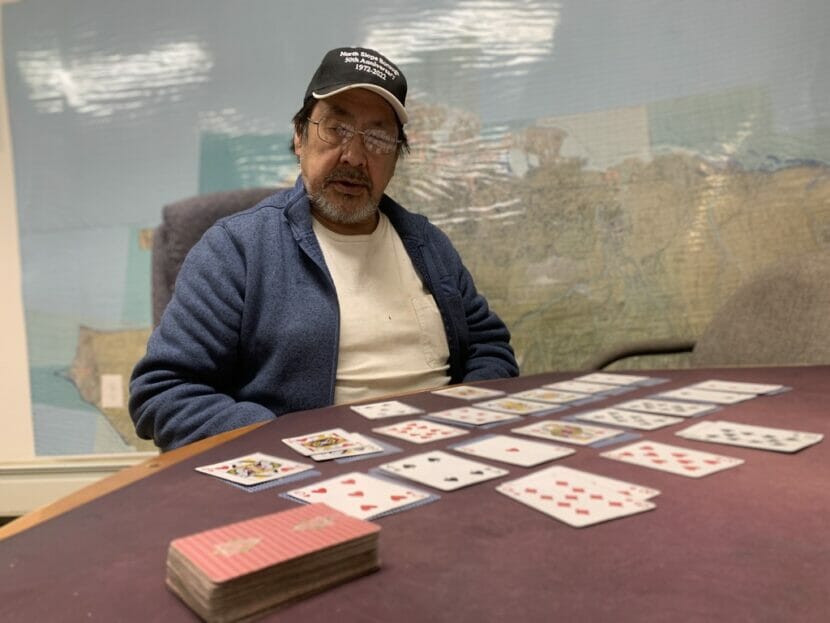
This is the third part of a series. Read the first part here and the second here.
Most evenings, Joe Leavitt, can be found passing the time with a deck of cards at the Barrow Volunteer Search and Rescue Base in Utqiaġvik. He usually plays solitaire by himself.
“Once in a great while, we will have a pinochle game,” he said.
This far north, the weather and climate are generally pretty unforgiving year round. In winter, winds are bitter cold and the season is long and dark. In summer, rains are frigid and winds can make the Chukchi Sea rough. The landscape too can be disorienting. The North Slope Borough includes eight communities scattered across more than 95,000 square miles. There are no trees and landmarks are few and far between.
Leavitt has been a volunteer here for decades and he knows all too well how quickly things can go from good to dangerous.
“I was rescued last summer,” he said. “My boat broke down and they actually went and retrieved my boat for me and helped me get home and it’s a good thing because when we are doing our hunting, we don’t have to pay for the rescue.”
But, that could change. Because according to the Arctic Council, all marine traffic increased by 44% through the Northwest Passage between 2013 and 2019. That means more boats, which could mean more rescues.
“Maybe if a lot of people start coming up here and change everything, maybe you’ll start having to pay for your own rescue,” he said.

Leavitt is also a whaling crew captain. In Utqiaġvik, the region’s rich whaling culture is on full display. Most people walk around town wearing jackets emblazoned with the name and flag of their whaling crew.
According to Leavitt, whaling seasons and search and rescue are the two things that bring the whole community together. And whether searching for a whale, or someone who’s lost in a boat or on a snowmachine, he said people up here never stop looking.
“We had [a few] incidents where people walked home and they thought they were dead and they actually went to their own memorial service. People have done that up here,” he said.
The volunteer search and rescue base operates on a shoestring budget, raising money through pull-tab sales and working with the tribal government and the North Slope Borough to fill gaps.
Curtis Lemen is the base mechanic, one of its few paid employees. He maintains two boats, both decades old. He said one of them was out of commission last year waiting on a new motor. A snowmachine parked nearby is one Lemen might use for parts in the future. In January, he went at least two weeks without a paycheck. Finding a regular and reliable source of funding is challenging.
“That is our hindrance. We barely get by with some of the maintenance that we do,” he said.
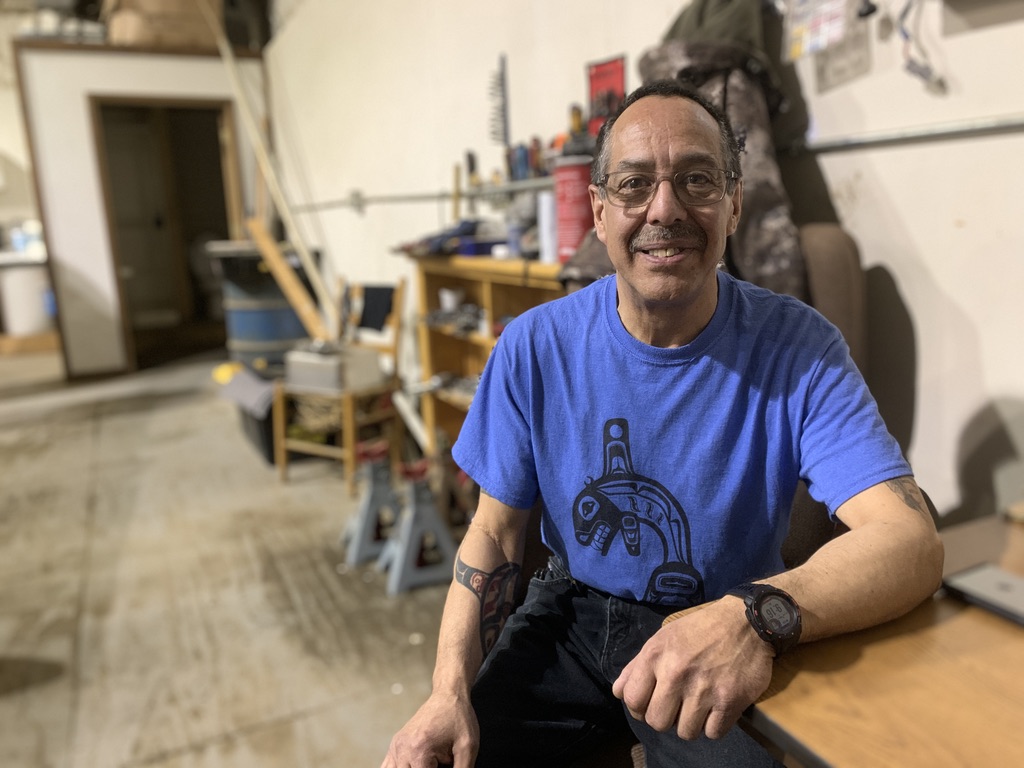
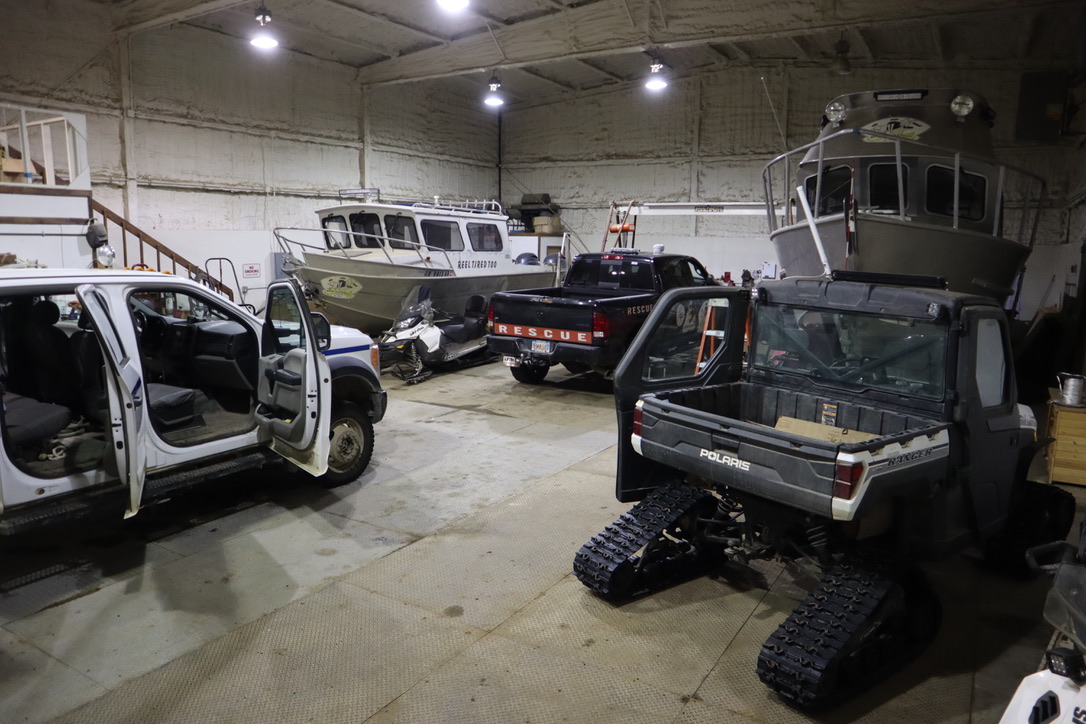
The North Slope Borough also operates a search and rescue program. At roughly $14 million dollars, its annual budget is more robust. The program’s key assets, two airplanes and two helicopters, are housed in a giant hangar alongside Utqiaġvik’s runway.
Josh Grier is the chief pilot. He said the North Slope is on its own.
“To be able to stage [a rescue] up here typically takes days to be able to get a Coast Guard asset or National Guard assets. Twenty-four hours probably at the very bare minimum, sometimes longer,” he said.
The closest U.S. Coast Guard base is roughly 940 miles due south of Utqiaġvik. By sea, that distance more than doubles. Last October, a Coast Guard helicopter hoisted a crewmember off a Canadian icebreaker 200 miles northeast of Utqiaġvik. The medivac was successful, with help from the borough, but Grier said they wouldn’t have been able to do it alone.
“We have hoist capabilities, but we are not capable,” he said.
He said it would take a much more robust training program and budget to be able to take on that kind of rescue at the borough level.
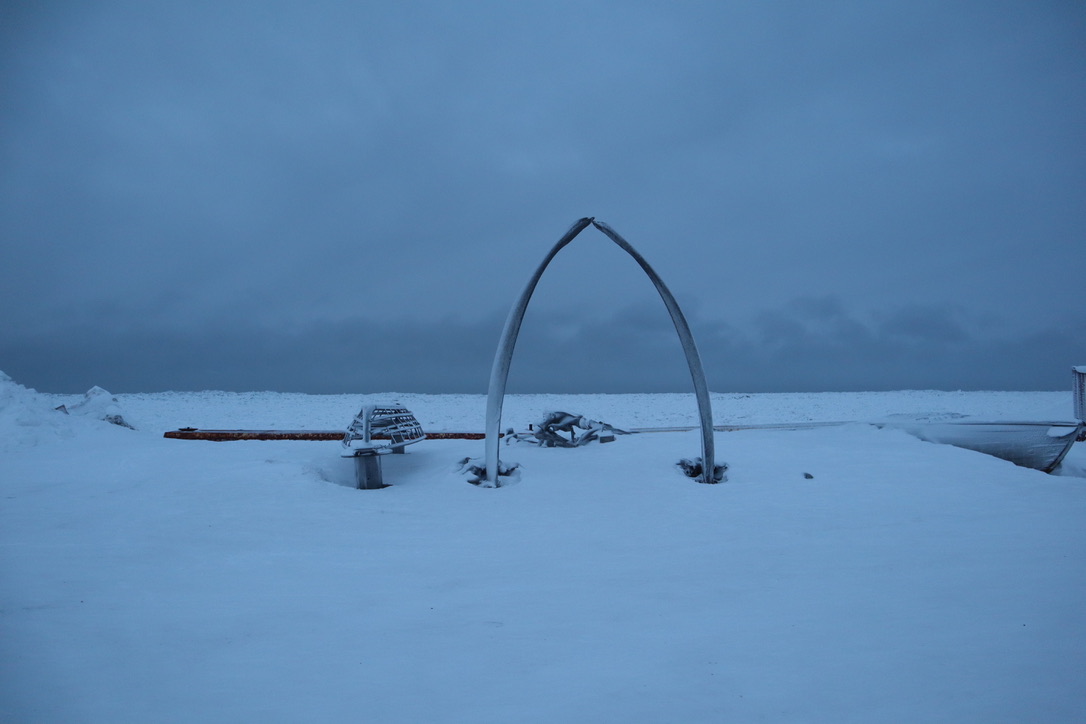
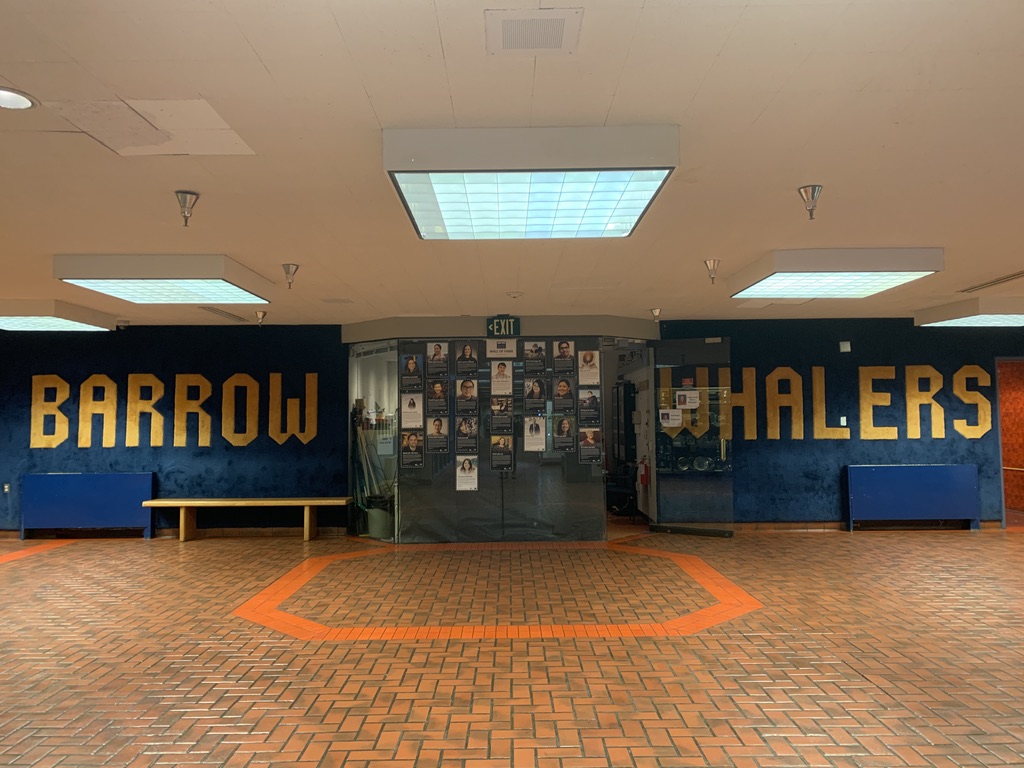
In 2019, nearly 500 passengers were hoisted by helicopter off a cruise ship in southern Norway — the largest rescue of its kind in Norwegian history. Leadership from the Arctic Council’s Emergency Prevention, Preparedness and Response working group said the incident could be a harbinger for what is to come in the Arctic.
Two years before that rescue, a graduate student in California wrote a dissertation on search and rescue preparedness in Alaska’s Arctic region and found that no single organization in the Arctic has enough resources for adequate search and rescue response, but, together, organizations like the U.S. Coast Guard, the North Slope Borough’s Search and Rescue Department and the Barrow Volunteer Search and Rescue Base are formidable. In fact, experts say that kind of cooperation in the Arctic will become essential as more and more ships pass through the region.
Last August, the Coast Guard, emergency response in Utqiaġvik — including search and rescue — and even the local hospital held a tabletop scenario in which dozens of cruise ship passengers needed help.
“We’re preparing for it and seeing where our gaps and resources lie,” said North Slope Borough Director of Search and Rescue Heather Dingman. “But at the moment, we wouldn’t be able to do any hoisting over the water.”
She added there are other ways her organization could help in an emergency. “If a cruise ship had a landing pad, we could be of assistance.” She said the borough also does something called “search and radio.”
“Where we fly over the water and we can provide communications about sailboats and things like that to the ground,” she said.
For volunteers like Tony Akpik though, it doesn’t matter what’s in the budget, or how many assets do or don’t exist. If needed, he said, he’d always be ready to assist in an emergency.
“We help each other. Everybody, no matter who you are,” he said.
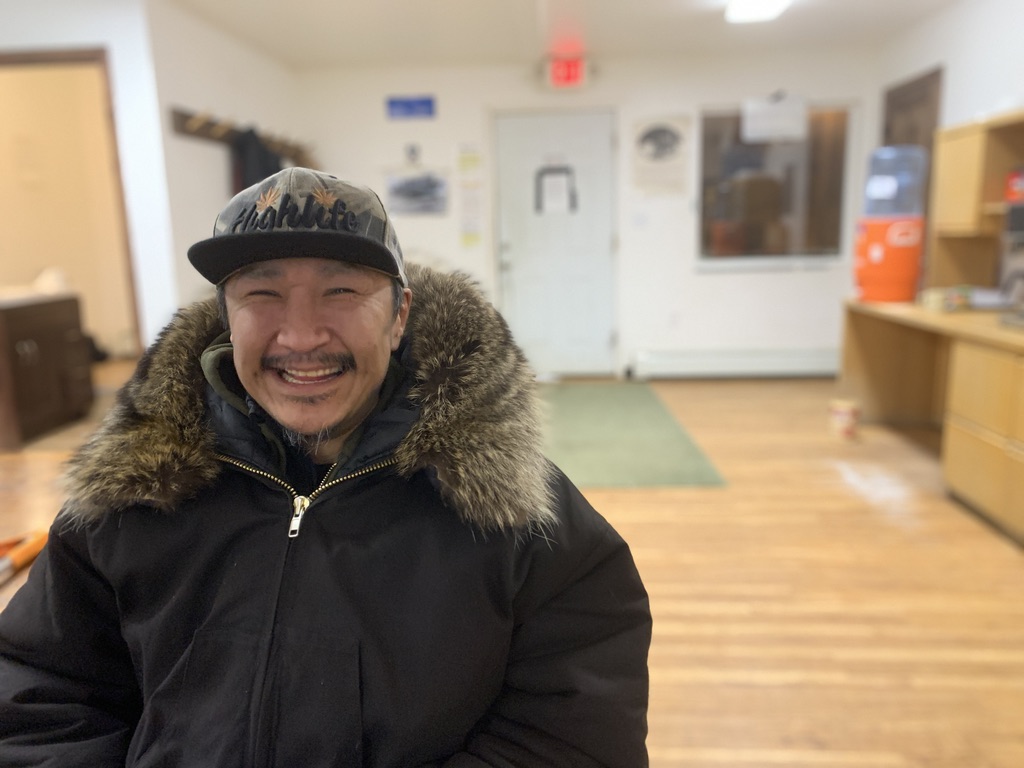
Akpik is Joe Leavitt’s nephew and works on Leavitt’s whaling crew. He credits his uncle with his willingness to help his community. Akpik said volunteering gives him a sense of purpose.
“It takes the community to pull up the whale and we pull up 20, 30 whales a year and it takes the whole community to do that, so we just keep it that way,” he said.
This ongoing series is made possible through a grant from the Climate Justice Resilience Fund.
